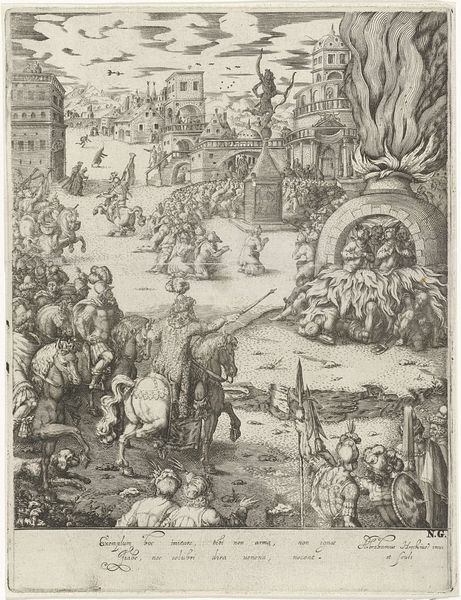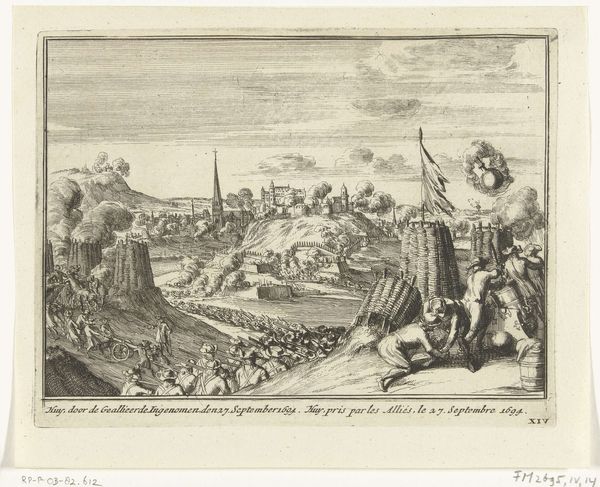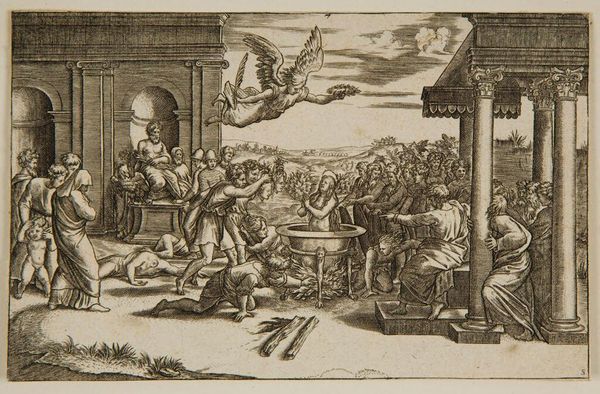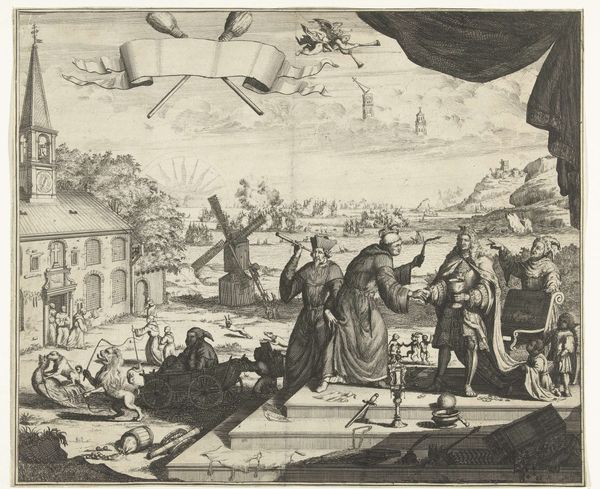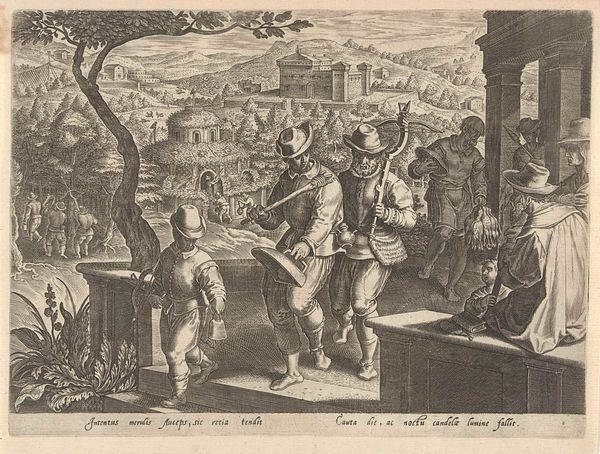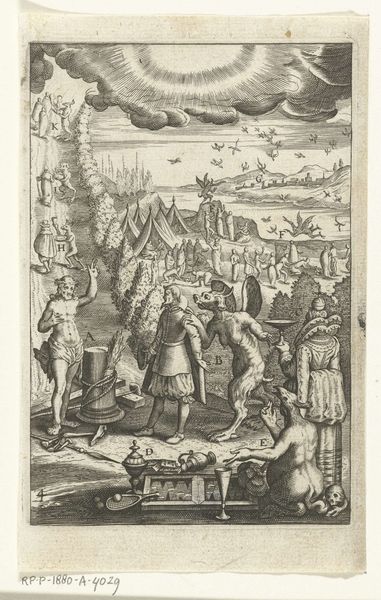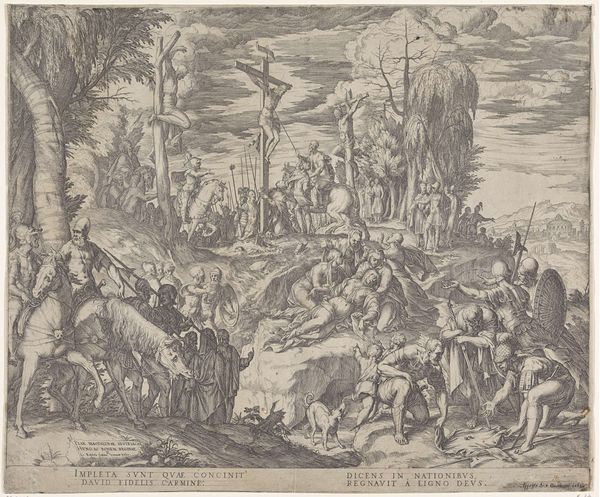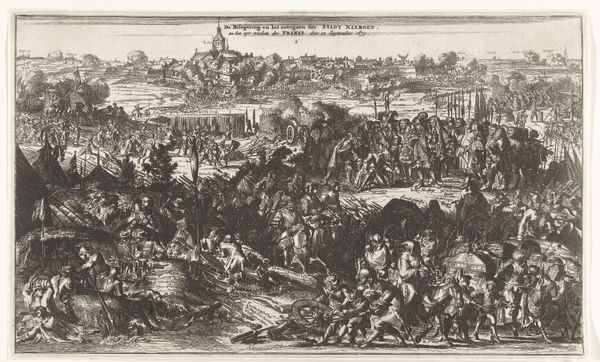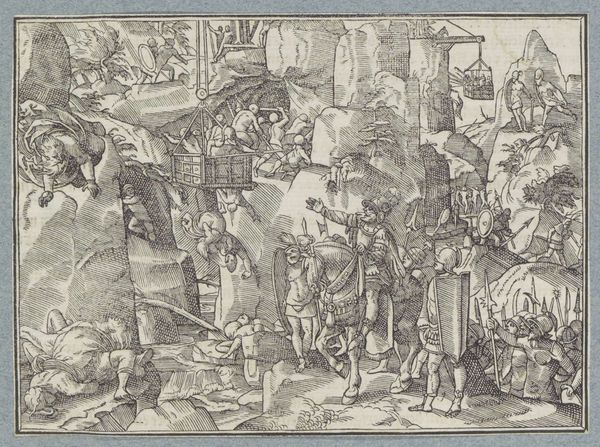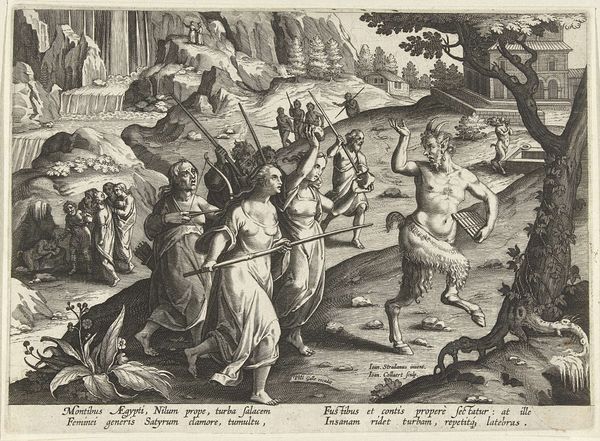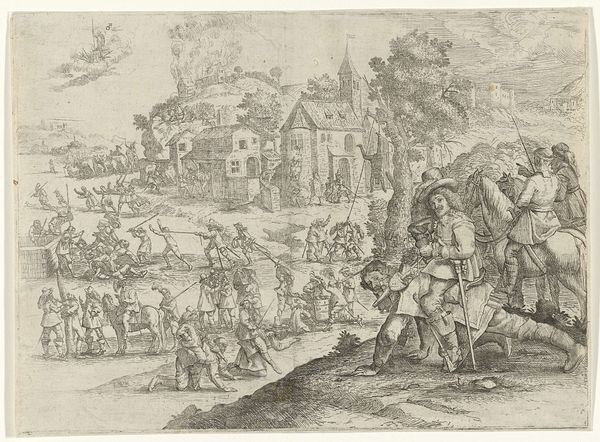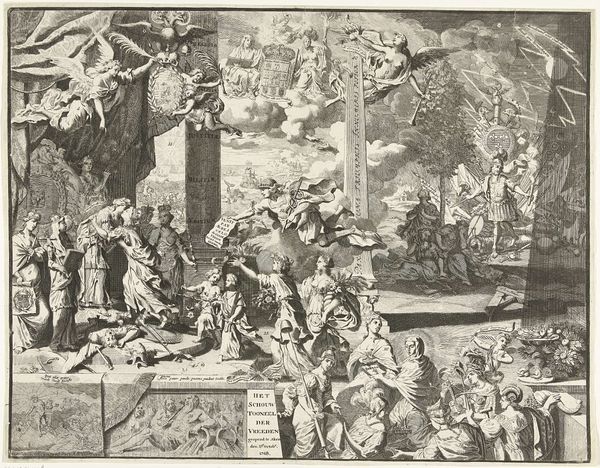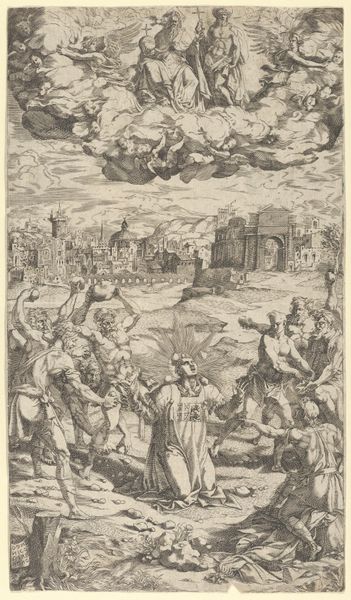
drawing, ink, engraving
#
drawing
#
ink drawing
#
narrative-art
#
pen drawing
#
landscape
#
figuration
#
11_renaissance
#
ink
#
history-painting
#
engraving
Dimensions: height 208 mm, width 361 mm
Copyright: Rijks Museum: Open Domain
Curator: Here we have Dirck Volckertsz Coornhert's "Flight into Egypt", created sometime between 1547 and 1551. The medium is ink on paper. Editor: It strikes me immediately how densely packed the composition is, almost claustrophobic despite depicting a journey through open land. Curator: Yes, observe how Coornhert masterfully uses cross-hatching and varied line weights to generate depth and shadow within this scene. The landscape almost overwhelms the figures. Semiotically, this reflects the immense burden and uncertainty inherent in their flight. Editor: And note the laborious method of engraving itself. This wasn’t quickly dashed off. It demanded immense skill, time, and access to very specific tools and training. Consider the economic and social strata involved in the very making of this image. The material cost of production likely determined the limited audience that first engaged with this work. Curator: The central narrative—the holy family's escape from Herod's persecution—gains symbolic resonance through Coornhert's landscape choices. We see both remnants of classical antiquity crumbling beside them as well as a nature filled with hazards, which underscore the impermanence of worldly power compared to divine destiny. Editor: Right, and let’s consider what engravers like Coornhert did. They were craftsman reproducing, disseminating ideas—essentially part of an early information industry. Who was employing them? Who commissioned these biblical scenes? What function did they serve beyond pure aesthetics for the rising merchant class that fueled artistic creation in that era? Curator: While the social context is important, analyzing the image on its own terms demonstrates an accomplished employment of perspective and an interesting combination of realistic figures set within an idealised landscape. Editor: The etching itself—the deliberate labor involved in its material construction—is itself testament to the changing modes of artistic production in the mid-16th century. Curator: Well, I believe our conversation brings fresh awareness to the detailed interplay between line, form and, by extension, meaning, displayed in this exquisite drawing. Editor: I would add that exploring the processes and materials through which prints were created is key to truly comprehend the art market and circulation of images during the Reformation.
Comments
No comments
Be the first to comment and join the conversation on the ultimate creative platform.

